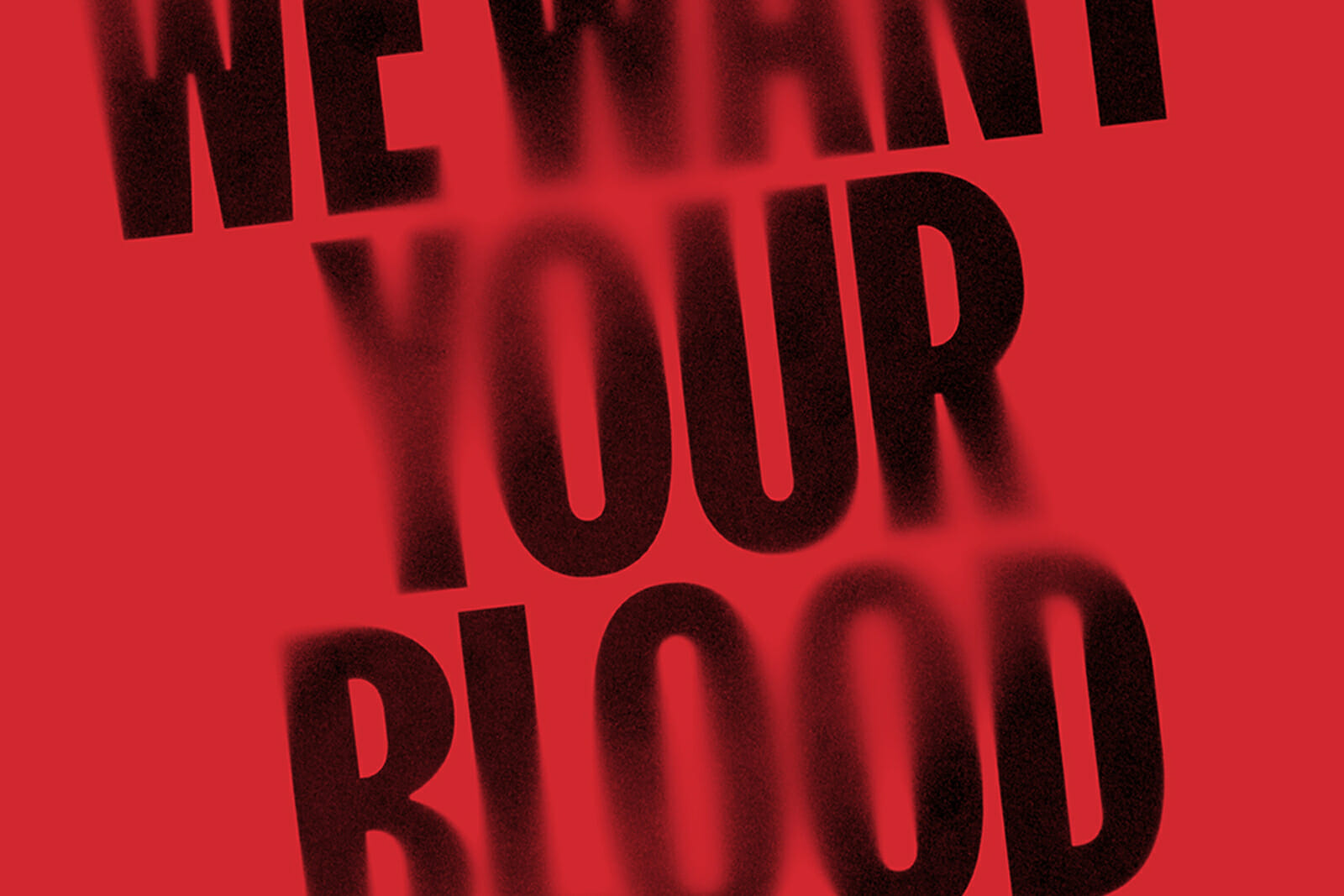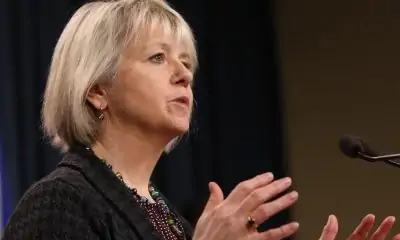Last week, Australians found themselves delighting in another fit of cancel culture, this time in the art world. Tasmania’s Dark Mofo art festival prides itself on being gritty but the mood was very much about removing any grit to begin with. Interest centred on the project of Spanish artist Santiago Sierra, who had proposed soaking a Union Jack flag “in the blood of its colonised territories.” The blood would come by way of donations. First Nation peoples “from countries claimed by the British Empire at some point in history, who reside in Australia” would furnish the liquid.
Given what followed, festival organisers might have preferred one of Sierra’s other suggestions: a work that would have involved vast amounts of cocaine. Social media outrage followed. People purporting to speak for the offended, while also counting themselves as offended, railed and expectorated. Festival curator Leigh Carmichael tried to be brave against the howling winds of disapproval. “At this stage we will push on,” he told ABC Radio Hobart on March 23. “Provided we can logistically make this work happen, we will.” He acknowledged that, “These were very dangerous topics, they’re hard, they hurt.” For criticisms that the work was being made by a Spanish artist, Carmichael was initially clear: to make work taboo for people from specific localities could constitute “a form of racism in itself.” Then inevitable equivocation followed. “This artist is about their experience and whether a Spanish artist has the right to weigh in, I don’t know.”
Within a matter of hours, Carmichael’s position had collapsed: Sierra’s project was cut and put out to sea. “We’ve heard the community’s response to Santiago Sierra’s Union Flag.” Grovelling and capitulation before this all powerful community followed. “We made a mistake, and take full responsibility. The project will be cancelled. We apologise to all First Nations people for any hurt that has been caused. We are sorry.”
David Walsh, Tasmanian founder of MONA (Museum of Old and New Art) and responsible for running the festival, was open to self-education and reflection, having not seen “the deeper consequences of this proposition.” He had thought the work “would appeal to the usual leftie demographic. I approved it without much thought (as has become obvious).” A bit of old-fashioned, censoring conservatism was called for.
Brian Ritchie, bassist for the Violent Femmes and artistic director of Mona Foma, the museum’s summer festival, felt righteous, firstly, wanting to distance his own outfit as “a completely different and separate organisation” before weighing into rubbishing the cultural sensitivity credentials of the work and the artist. “Exploiting people while claiming to protest on their behalf is intellectually void. Stupid programming is aesthetically null. Controversy outweighing the quality of the work is bad art.”
The cancellation was approved by the bloated entities across the academy, certain ethnic groups and the professionally enraged. Critique ranged from the identity of the artist (Spanish, foreigner, coloniser) to the merits of the work itself. “A coloniser artist intending to produce art with the actual blood of colonised people is abusive, colonising and re-traumatising,” came the social worker assessment from novelist Claire G. Coleman. “The idea is disgusting and terrible and should not have been considered.”
If every traumatic, disgusting incident (rape, pillage, massacres, wars, the crucifixion) were to be considered a bad idea for representation, the canvasses best be left empty, the art shows barren. Never depict, for instance, that Tasmania’s lands are blood soaked by European conquest. Do not, as Australian artist Mike Parr did in June 2018, bury yourself beneath a busy street of the state capital Hobart to get to the hidden truth. That way lies trauma.
The art content commissars were also keeping close eye over how the depiction might have been properly staged, if it was even possible. Such a contribution can be found in the journal Overland. “Simply stating or depicting that the beginnings of the Australian colony were brutal and bloody for Indigenous people is a passive act,” moaned the very selective Cass Lynch. She demands, expects. “The concept on its own isn’t active as an agent of truth-telling, it doesn’t contain an indigenous vice or testimony, it has no nuance. On its own, it leans into the glorification of the gore and the violence of colonisation.” Blood, it would seem, is no indicator of truth.
In such convulsions of faux sensitivity to the First Nations, the arts sector (for this is what it has become in Australia, a corporatized, sanitised cobbling of blandness, branding and safe bets) justified not merely the pulling of the piece, but that it should have ever been contemplated to begin with. In the commentary on Sierra, the Indigenous peoples are spoken of in abstract and universal terms: they were hurt and all have one, monolithic voice; and “white curators” should have thought better in letting the project ever get off the ground. Thinking in cultural police terms, Paola Balla asked “how this was allowed to be programmed in the first place? And what structures support white curators to speak of Black traumas?” Such questions are bound to embolden art vandals across the world keen on emptying every museum for being inappropriately informed about “power structures.”
Ironically enough, in this swell of ranting about voices and representation, the artist in question was deprived of it. Sierra, in a statement released on March 25, called treatment of his work “superficial and spectacular” and his own treatment as a “public lynching.” His quotes had been misconstrued; he had been “left without a voice, without the capacity to explain and defend” his project. He had hoped the blood-soaked Union Jack would inspire reflection “on the material on which states and empires are built” and reveal how “all blood is equally red and has the same consistency, regardless of the race or culture of the person supplying it.”
Sierra’s shabby treatment did not go unnoticed. Parr took issue with the festival organisers’ “cowardice and lack of leadership.” Michael Mansell, Chair of the Aboriginal Land Council of Tasmania urged Carmichael to push on with the work. “The artist challenges Tasmanians about whether Aboriginal lands were peacefully or violently taken, and uses the blood-smattered Union Jack to express his view.” By all means disagree with the artist and even feel offended “but that cannot justify stifling the artist’s freedom of thought.” A sinister result had followed from the cancellation of the project. “The unintended consequence of the objectors is that the discussion about truth telling will now be ignored, put aside.”
There are parallels in this fiasco with previous instances of rage over what can and cannot be depicted in the shallow art lands of the Antipodes. The cultural police also took issue with Australian photographic artist Bill Henson in 2008 for his portrayals of children as sexual beings. On May 22 that year, twenty Henson photographs featuring “naked children aged 12 and 13” were confiscated by police from Sydney’s Roslyn Oxley9 gallery. Jason Smith of the Monash Gallery of Art defended Henson, claiming that his work “has consistently explored human conditions of youth, and examined a poignant moment between adolescence and adulthood.”
Then Prime Minister Kevin Rudd was having none of it. There were simply certain things you could not touch, that art should not enable you to understand. Henson had erred into vice. “Kids deserve to have the innocence of their childhood protected,” he spluttered. Rudd found the photographs “absolutely revolting” despite having not seen them. “Whatever the artistic view of the merits of that sort of stuff – frankly I don’t think there are any – just allow kids to be kids.” Jenny Macklin, Minister for Families at the time, moralised before the Nine Network about how children were “just getting bombarded with sexualised images all the time, and it’s that sexualisation of children that I think is wrong.” Now, just as then, artists have been put on notice.
If you’re interested in writing for International Policy Digest – please send us an email via submissions@intpolicydigest.org


















